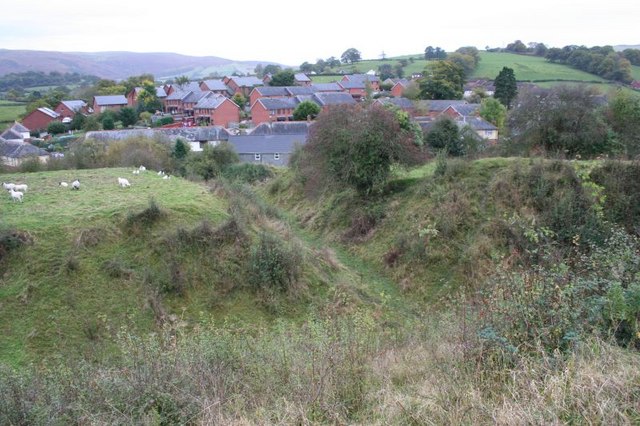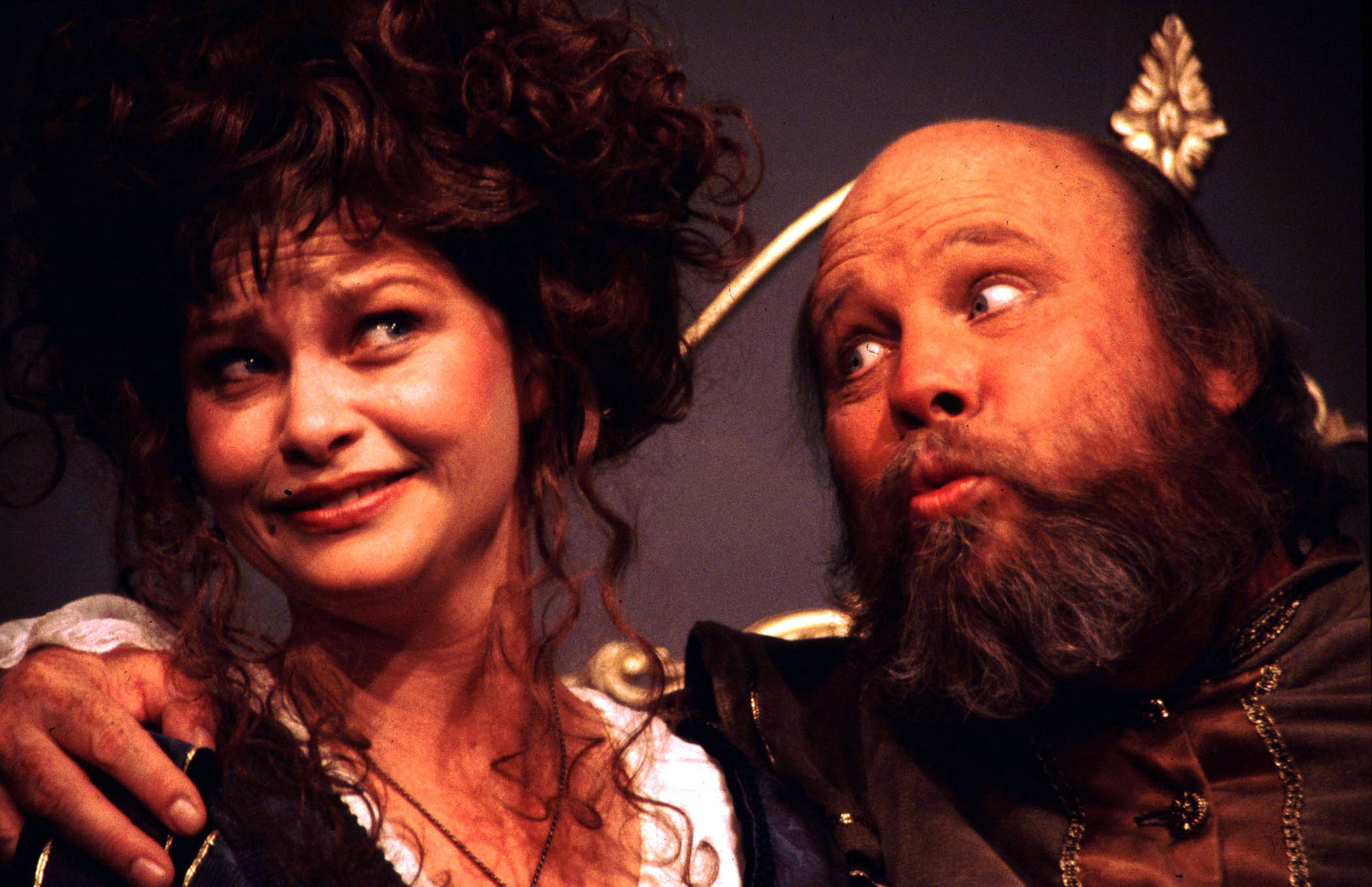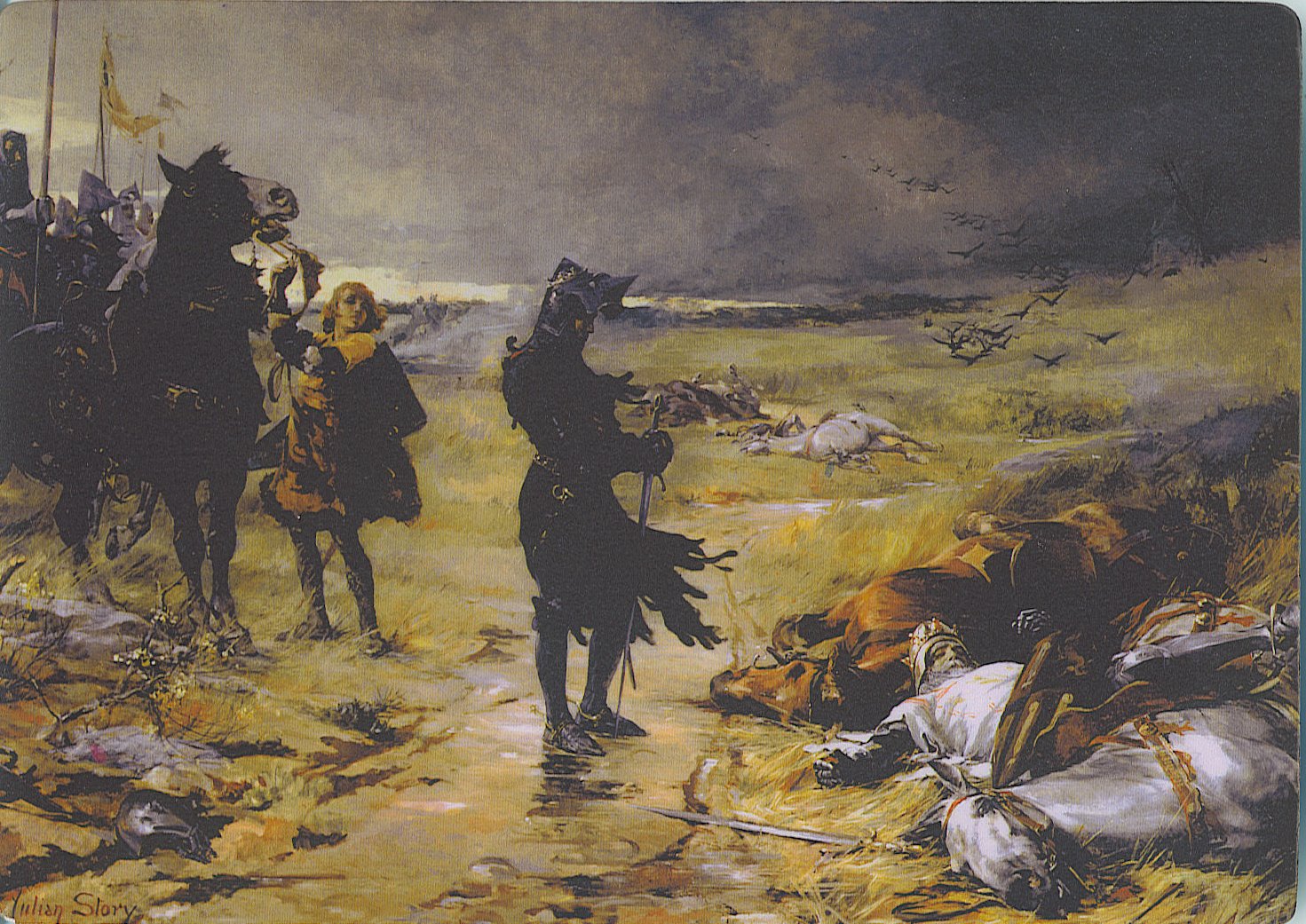|
Builth Castle
Builth Castle ( cy, Castell Llanfair-ym-Muallt) was a castle built under King Edward I, just outside Builth Wells, Powys, Wales. At one time it was an impressive stone-built castle but all the masonry has been removed over the years and all that remains are the mound on which it stood, the ditches and embankments. History Builth Castle was erected in 1277, the first castle to be built by King Edward I in Wales. The site chosen was a pre-existing motte-and-bailey castle with a motte surrounded by two baileys, all surrounded by a further boundary wall. This older castle had already changed hands several times as the Normans and Welsh fought for supremacy in these parts, and the small town of Builth had sprung up nearby. In 1260 the old castle was taken and largely destroyed by Llywelyn ap Gruffudd. It is not clear how much of the original structure was still there when Edward I started building his stone castle. Construction started in May 1277, and continued until August 1282, when ... [...More Info...] [...Related Items...] OR: [Wikipedia] [Google] [Baidu] |
Builth Castle - Geograph
Builth Wells (; cy, Llanfair-ym-Muallt) is a market town and community (Wales), community in the county of Powys and historic counties of Wales, historic county of Brecknockshire (Breconshire), mid Wales, lying at the confluence of rivers River Wye, Wye and Afon Irfon, Irfon, in the Welsh (or upper) part of the Wye Valley. In 2011 it had a population of 2,568. Etymology ''Builth'' is a longstanding anglicization of the Old Welsh ''Buellt/Buallt'', which combines ''bu'' () "ox" and ''gellt'' (later ''gwellt'') "pasture, lea or leas". The town added "Wells" in the 19th century when its Mineral spring, springs were promoted as a Spa town, visitor attraction. Its modern Welsh language, Welsh name ''Llanfair-ym-Muallt'' means "Saint Mary in Ox Leas". In the centre of the town is a large mural (about by wide) depicting Llywelyn ap Gruffudd, who was killed at the Battle of Orewin Bridge on 11 December 1282. Governance Builth Wells is in the Brecon and Radnorshire (UK Parliament ... [...More Info...] [...Related Items...] OR: [Wikipedia] [Google] [Baidu] |
Edward III Of England
Edward III (13 November 1312 – 21 June 1377), also known as Edward of Windsor before his accession, was King of England and Lord of Ireland from January 1327 until his death in 1377. He is noted for his military success and for restoring royal authority after the disastrous and unorthodox reign of his father, Edward II. EdwardIII transformed the Kingdom of England into one of the most formidable military powers in Europe. His fifty-year reign was one of the longest in English history, and saw vital developments in legislation and government, in particular the evolution of the English Parliament, as well as the ravages of the Black Death. He outlived his eldest son, Edward the Black Prince, and the throne passed to his grandson, Richard II. Edward was crowned at age fourteen after his father was deposed by his mother, Isabella of France, and her lover Roger Mortimer. At age seventeen he led a successful coup d'état against Mortimer, the ''de facto'' ruler of the coun ... [...More Info...] [...Related Items...] OR: [Wikipedia] [Google] [Baidu] |
Philippa, 5th Countess Of Ulster
Philippa of Clarence (16 August 1355 – 5 January 1382) was a medieval In the history of Europe, the Middle Ages or medieval period lasted approximately from the late 5th to the late 15th centuries, similar to the Post-classical, post-classical period of World history (field), global history. It began with t ... English princess and the ''suo jure'' Countess of Ulster. Biography She was born at Eltham Palace in Kent on 16 August 1355, the only child of Lionel of Antwerp, 1st Duke of Clarence, and Elizabeth de Burgh, 4th Countess of Ulster. Her father was the third son, but second son to survive infancy, of King Edward III of England and Philippa of Hainault. She was the eldest grandchild of King Edward and Queen Philippa, her namesake. Philippa married Edmund Mortimer, 3rd Earl of March, at the age of fourteen, in the Queen's Chapel at Reading Abbey, an alliance that would have far-reaching consequences in English history. Her cousin, King Richard II, remained chi ... [...More Info...] [...Related Items...] OR: [Wikipedia] [Google] [Baidu] |
Richard Of York
Richard of York, 3rd Duke of York (21 September 1411 – 30 December 1460), also named Richard Plantagenet, was a leading English magnate and claimant to the throne during the Wars of the Roses. He was a member of the ruling House of Plantagenet by virtue of being a direct male-line descendant of Edmund of Langley, King Edward III's fourth surviving son. However, it was through his mother, Anne Mortimer, a descendant of Edward III's second surviving son, Lionel of Antwerp, that Richard inherited his strongest claim to the throne, as the opposing House of Lancaster was descended from John of Gaunt, Duke of Lancaster, the third surviving son of Edward III. He also inherited vast estates and served in various offices of state in Ireland, France and England, a country he ultimately governed as Lord Protector during the madness of King Henry VI. His conflicts with Henry's wife, Margaret of Anjou, and other members of Henry's court, as well as his competing claim to the throne, we ... [...More Info...] [...Related Items...] OR: [Wikipedia] [Google] [Baidu] |
War Of The Roses
The Wars of the Roses (1455–1487), known at the time and for more than a century after as the Civil Wars, were a series of civil wars fought over control of the throne of England, English throne in the mid-to-late fifteenth century. These wars were fought between supporters of two rival cadet branches of the royal House of Plantagenet: House of Lancaster, Lancaster and House of York, York. The wars extinguished the patrilineality, male lines of the two branches, leading to the Tudors of Penmynydd, Tudor family inheriting the Lancastrian claim to the throne. Following the war, the Houses of Lancaster and York were united, creating Tudor Dynasty, a new royal dynasty and thereby resolving their rival claims. For over thirty years, there were greater and lesser levels of violent conflict between Template:Wars of the Roses family tree, various rival contenders for control of the English monarchy. The War of the Roses had its roots in the wake of the Hundred Years' War. After figh ... [...More Info...] [...Related Items...] OR: [Wikipedia] [Google] [Baidu] |
Falstaff
Sir John Falstaff is a fictional character who appears in three plays by William Shakespeare and is eulogised in a fourth. His significance as a fully developed character is primarily formed in the plays '' Henry IV, Part 1'' and '' Part 2'', where he is a companion to Prince Hal, the future King Henry V of England. Falstaff is also featured as the buffoonish suitor of two married women in '' The Merry Wives of Windsor''. Though primarily a comic figure, Falstaff embodies a depth common to Shakespeare's major characters. A fat, vain, and boastful knight, he spends most of his time drinking at the Boar's Head Inn with petty criminals, living on stolen or borrowed money. Falstaff leads the apparently wayward Prince Hal into trouble, and is ultimately repudiated after Hal becomes king. Falstaff has since appeared in other media, including operas by Giuseppe Verdi, Ralph Vaughan Williams, and Otto Nicolai, and in Orson Welles' 1966 film ''Chimes at Midnight''. The operas focus ... [...More Info...] [...Related Items...] OR: [Wikipedia] [Google] [Baidu] |
William Shakespeare
William Shakespeare ( 26 April 1564 – 23 April 1616) was an English playwright, poet and actor. He is widely regarded as the greatest writer in the English language and the world's pre-eminent dramatist. He is often called England's national poet and the " Bard of Avon" (or simply "the Bard"). His extant works, including collaborations, consist of some 39 plays, 154 sonnets, three long narrative poems, and a few other verses, some of uncertain authorship. His plays have been translated into every major living language and are performed more often than those of any other playwright. He remains arguably the most influential writer in the English language, and his works continue to be studied and reinterpreted. Shakespeare was born and raised in Stratford-upon-Avon, Warwickshire. At the age of 18, he married Anne Hathaway, with whom he had three children: Susanna, and twins Hamnet and Judith. Sometime between 1585 and 1592, he began a successful career in London as an ... [...More Info...] [...Related Items...] OR: [Wikipedia] [Google] [Baidu] |
John Oldcastle
Sir John Oldcastle (died 14 December 1417) was an English Lollard leader. Being a friend of Henry V, he long escaped prosecution for heresy. When convicted, he escaped from the Tower of London and then led a rebellion against the King. Eventually, he was captured and executed in London. He formed the basis for William Shakespeare's character John Falstaff, who was originally called John Oldcastle. Family Oldcastle's date of birth is unknown, although dubious and possibly apocryphal sources place it variously at 1360 or 1378, although 1370 is most likely closer to the truth. His parents were Richard and Isabel Oldcastle of Almeley, Herefordshire. His grandfather, also called John Oldcastle, was Herefordshire's MP during the latter part of the reign of King Richard II. Early life Oldcastle is first mentioned in two separate documents in 1400, first as a plaintiff in a suit regarding the advowson of Almeley church, and again as serving as a knight under Lord Grey of Codnor in a ... [...More Info...] [...Related Items...] OR: [Wikipedia] [Google] [Baidu] |
Owain Glyndŵr
Owain ap Gruffydd (), commonly known as Owain Glyndŵr or Glyn Dŵr (, anglicised as Owen Glendower), was a Welsh leader, soldier and military commander who led a 15 year long Welsh War of Independence with the aim of ending English rule in Wales during the Late Middle Ages. He was also an educated lawyer, he formed the first Welsh Parliament ( cy, Senedd Cymru), and was the last native-born Welshman to hold the title Prince of Wales. Owain Glyndŵr was a direct descendant of several Welsh royal dynasties including the princes of Powys via the House of Mathrafal through his father Gruffudd Fychan II, hereditary Prince ( cy, Tywysog) of Powys Fadog. And through his mother, Elen ferch Tomas ap Llywelyn, he was also a descendant of the kings and princes of the Kingdom of Deheubarth as well as the royal House of Dinefwr, and the kings and princes of the Kingdom of Gwynedd and their cadet branch of the House of Aberffraw. The rebellion began in 1400, when Owain Glyndŵr, a descende ... [...More Info...] [...Related Items...] OR: [Wikipedia] [Google] [Baidu] |
Edward The Black Prince
Edward of Woodstock, known to history as the Black Prince (15 June 1330 – 8 June 1376), was the eldest son of King Edward III of England, and the heir apparent to the English throne. He died before his father and so his son, Richard II, succeeded to the throne instead. Edward nevertheless earned distinction as one of the most successful English commanders during the Hundred Years' War, being regarded by his English contemporaries as a model of chivalry and one of the greatest knights of his age. Edward was made Duke of Cornwall, the first English dukedom, in 1337. He was guardian of the kingdom in his father's absence in 1338, 1340, and 1342. He was created Prince of Wales in 1343 and knighted by his father at La Hougue in 1346. In 1346, Prince Edward commanded the vanguard at the Battle of Crécy, his father intentionally leaving him to win the battle. He took part in Edward III's 1349 Calais expedition. In 1355, he was appointed the king's lieutenant in Gascony, a ... [...More Info...] [...Related Items...] OR: [Wikipedia] [Google] [Baidu] |
Hugh De Freyne, Baron Freyne
Hugh may refer to: *Hugh (given name) Noblemen and clergy French * Hugh the Great (died 956), Duke of the Franks * Hugh Magnus of France (1007–1025), co-King of France under his father, Robert II * Hugh, Duke of Alsace (died 895), modern-day France * Hugh of Austrasia (7th century), Mayor of the Palace of Austrasia * Hugh I, Count of Angoulême (1183–1249) * Hugh II, Count of Angoulême (1221–1250) * Hugh III, Count of Angoulême (13th century) * Hugh IV, Count of Angoulême (1259–1303) * Hugh, Bishop of Avranches (11th century), France * Hugh I, Count of Blois (died 1248) * Hugh II, Count of Blois (died 1307) * Hugh of Brienne (1240–1296), Count of the medieval French County of Brienne * Hugh, Duke of Burgundy (d. 952) * Hugh I, Duke of Burgundy (1057–1093) * Hugh II, Duke of Burgundy (1084–1143) * Hugh III, Duke of Burgundy (1142–1192) * Hugh IV, Duke of Burgundy (1213–1272) * Hugh V, Duke of Burgundy (1294–1315) * Hugh Capet (939–996), King of France * H ... [...More Info...] [...Related Items...] OR: [Wikipedia] [Google] [Baidu] |
Eubulus Le Strange, 1st Baron Strange
Eubulus le Strange, 1st Baron Strange (died 1335) was an English baron and an especially competent and trusted military officer for King Edward III. He married Alice de Lacy, Countess of Lincoln (1281–1348) as her second husband in 1324, 1916 and has been incongruously considered as her lover during her unhappy and childless first marriage (1294–1322, divorced 1318 after an abduction 1317) to her royal first husband, (executed 1322). They had no children. He died while on campaign in the |






